The Ultimate Guide to Indoor Plants
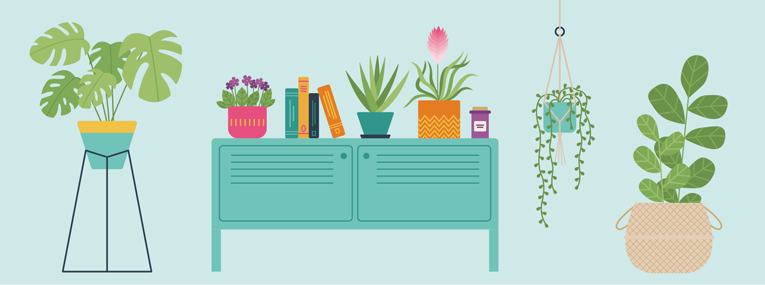
Indoor plants are a must-have in any space as they come with many different benefits. They’ve also been an essential part of interior design for a very long time. As more and more people move to small spaces in urban areas, the need to have some greenery at home grows. Bringing plants into your home and caring for them is a beneficial activity as it can boost your mood and add life to your indoor space. There are so many different types of houseplants that the real challenge is choosing the ones that will thrive in your house.
Read our ultimate guide to indoor plants to learn how to choose your houseplants, how to keep them alive, and how to use them to beautify your home.

A Short History of Indoor Plants
The practice of growing potted plants indoors, also known as indoor gardening, originates from Ancient Rome and Ancient Greece. Observing old paintings and sculptures, we notice that these ancient civilizations had a real love for beauty. Therefore growing plants was a common practice. Other civilizations such as the Egyptians and the Indians also enjoyed growing potted plants but they usually kept them outdoors. Indoor gardening was also present in Chinese and Japanese culture. However, it consisted mostly of growing bonsai trees and dwarf plants.
Although indoor gardening was a common practice in the ancient world, people forgot about it for quite some time. But luckily for us, growing houseplants became a popular endeavour once more, starting with the 17th century. In 1652, Sir Hugh Platt wrote ‘The Garden of Eden’. His book had a huge influence on the art of plant growing. By writing about the possibility of bringing nature indoors, Sir Hugh Platt inspired the English people to build greenhouses and conservatories. In these innovative locations, tropical plants that were discovered during voyages to the new world could finally be admired.
Victorian era
The practise of growing plants indoors grew in popularity in the Victorian era. People realized that plants can spruce up any space. They can also make a dreary and long winter a bit more pleasant. The most popular house plants in the Victorian era were Boston Ferns, Parlor Palms, English Ivy, Cast Iron, and Bird’s Nest Ferns. Why these plants? Because they had a few essential features: they didn’t need a lot of sunlight, they were resilient, thrived in humid environments, and didn’t mind the occasional drafts.
Throughout history, growing tropical houseplants has been a symbol of wealth and status. But now, we can all enjoy them without making any financial effort. You don’t have to live in a lavish mansion to grow exotic houseplants. This practice has been adapted to fit a modern lifestyle. Over the past decades, we’ve witnessed many different indoor gardening fads. For instance, the 70s were all about living room jungles. Whilst the 90s came along with flowering orchids and faux plants. As more and more people started to move into small spaces in urban areas, the practice of growing indoor plants has shifted accordingly.
As a result, tiny plants with colourful and unusual foliage and low-maintenance plants are the major trends of the decade. These plants can make us feel more connected to nature despite having busy city lives. Read on to find out more about the benefits of growing indoor plants.
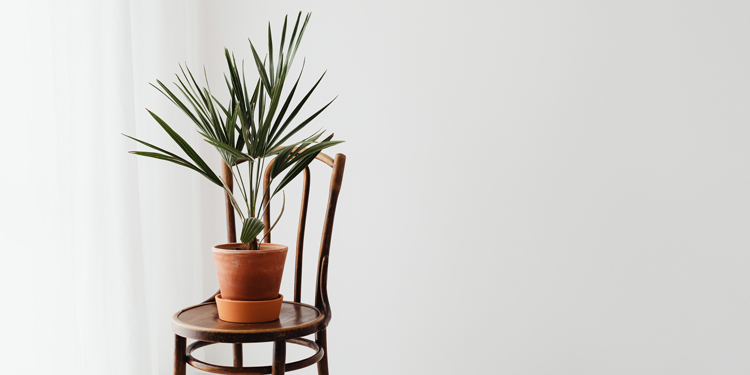
The Benefits of Indoor Plants
People enjoy living and working in spaces that are nicely decorated with potted plants, and not just for aesthetic purposes. Having beautiful plants around comes along with a lot of scientifically proven benefits. Let’s take a look at the most notable ones!
Indoor gardening has mental health benefits
If you are under a lot of stress, growing plants indoors may be a solution. According to a 2015 study, being around indoor plants can reduce your psychological stress. Plants do a great job of making you feel soothed and comfortable. This is due to the affect of the activity on your nervous system and lowering your blood pressure. It is also important if you have a job that involves spending a lot of time in front of the computer. This is due to the same study shows that computer tasks can cause spikes in blood pressure and heart rate.
But there is more to it. In addition to preventing you from being too stressed, indoor gardening can also become a therapeutic endeavour. A study conducted in 2017 indicates that horticultural therapy is a great option for people who suffer from dementia, depression, anxiety, or other mental conditions. Furthermore, mental health specialists in Manchester, England are now prescribing indoor gardening to their patients. The good news is that, unlike other alternative therapies, gardening can be self-prescribed without any risks.
Growing plants indoors helps your body heal faster
Researchers have found that patients who were able to look at nature during their stay in the hospital were more calm and had better clinical outcomes. In addition to that, they needed less pain medication and left the hospital earlier.
Indoor plants are a positive escape from the unpleasant and stressful situation of being hospitalised. It is worth mentioning that the study focused on people who were in recovery in a hospital setting. However indoor plants are probably just as therapeutic at home. So, if you need to recover from an illness or injury, make sure you have some greenery to look at.
Houseplants can improve your professional life
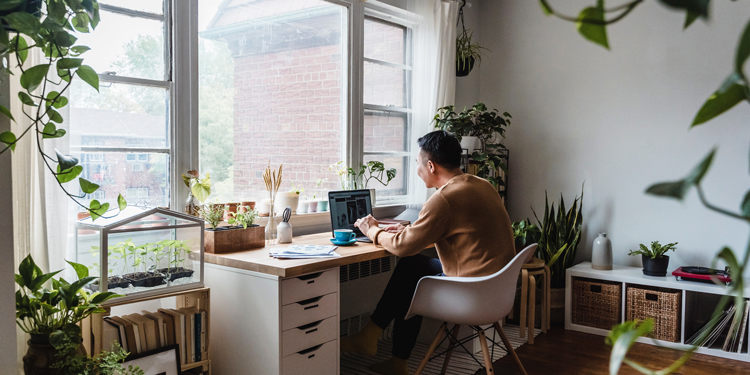
If you have trouble staying focused at work, you’ll be happy to learn that plants can sharpen your attention. This only applies to real plants, as plastic ones won’t have the same effect.
A recent study indicates that real foliage plants can improve the levels of attention and concentration in students. The study involved 23 students, distributed in four groups. These included:
- Group 1 had a real plant.
- Group 2 had a fake plant.
- Group 3 had a photo of a plant.
- Group 4 didn’t have any plant.
The brain scans of the 23 students led to the conclusion that real, live plants were extremely effective. Meanwhile the other three options were not.
Another way in which indoor plants can boost your professional life is by making you more productive. Several studies have shown that having a plant in your workspace will increase your creativity and your productivity. So, if you’re feeling a bit lonely in your cubicle, share it with a few succulents, cacti, or with a bromeliad. But make sure you choose a plant that doesn’t need much to thrive and that will survive in your office space.
Plants might improve the air quality in your indoor space
Wondering why we said that plants ‘might’ improve the air quality in your indoor space and not that they ‘can’? That’s because this is a pretty controversial idea as some scientists have found it to be true, while others found that it is not.
It all began with a NASA study that was carried out in the 80s. Their aim was to find effective ways to improve air quality in sealed spacecraft. They found out that roots and soil can decrease the levels of airborne volatile compounds (VOCs). Oppositely, other studies have found that even if you’d fill your home with plants you still wouldn’t be able to get the same amount of purification as you would with a modern biofilter. That being said, some plants are more effective than others. Therefore if you want to get a few air-purifying plants, the best options are Boston ferns, Ficus trees, spider plants, areca, bamboo palms, etc.
Plants help you sleep better
Most plants release oxygen during the day and carbon dioxide during the night. These plants won’t help you sleep better unless you work shifts and your schedule is upside down. If you have a regular schedule and want to get a good night’s sleep, you can start growing plants that emit oxygen during the night such as succulents, bromeliads, orchids, and snake plants.
Growing houseplants is an affordable and fun way to spruce up your home.
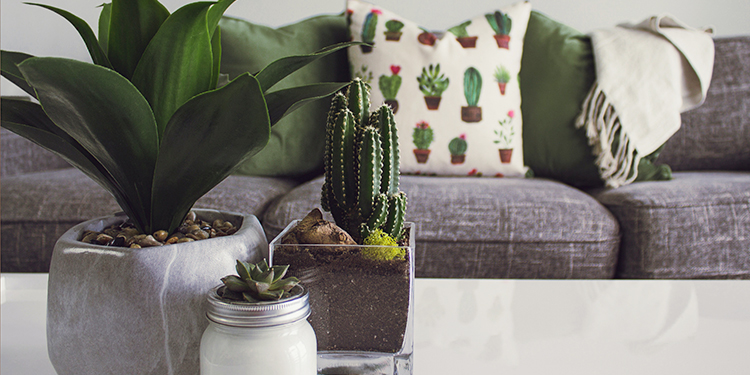
Most plants, even the most attractive ones such as palms, bromeliads, and orchids are quite inexpensive. The beauty and vibrance of these plants will surely spruce up any indoor space, even a boring one. If you have window sills, you’re in luck. This is due to the fact most plants will thrive near the windows where they get plenty of natural light. Macrame hangers and colourful pots are other great options, especially if you like the boho/jungalow vibe.
Don’t want to spend any money on plants? No problem, you can always try your hand at propagating. Plants are pretty much everywhere. All you have to do is ask around or take a walk in nature and you might come across something awesome.
Design with Plants
The aim of interior design is to create a living space or a workspace that has a nice atmosphere and is comfortable. To feel relaxed and to enjoy spending time in an indoor space, you need to put some time and effort into making this space cosy and aesthetically pleasing. Nature plays an important role in interior design. Interestingly enough, the more you manage to bring a piece of nature indoors, the nicer your indoor space becomes. Natural materials such as wood and stone are essential in building and decorating a space. This demonstrates that we depend on nature to survive and to thrive. So, once we have a nicely furnished room, the final touch is to add complementary plants. We’ve already shared some scientifically proven benefits of having houseplants, all that’s left is to choose the ones that fit our needs and preferences.
But first, make sure you take the following aspects into consideration:
Location
It is very important to analyze the space before you choose the plants. Why? Because plants can have very different needs and not all of them will survive the same growing conditions. For instance, some plants will thrive in a sunny and dry environment, while others prefer shade and humidity. Also, some plants are not fit for bedrooms, while others might be poisonous, so they should be kept away from small children and pets.
Arrangement
Achieving a nicely decorated space takes some planning, which is why it is always best to choose the plant arrangement beforehand. Do you want to have a star plant a.k.a a statement plant that will be the focal point? Or maybe you prefer to create a plant wall with a lot of tiny succulents and cacti. Regardless of what you choose, formulate a plan first.
Plants
Now that you have a plan, it’s time to start shopping for plants. You can start by searching online and making a list of your favourite plants and their prices and then check with your local nurseries. If you prefer to buy everything from one place, why not order all the plants in bulk from a trusted source? With so many available options, make sure you check the reviews and what other plant lovers have to say about certain plants and sellers.
Pots
In general, it’s best to repot your plants as soon as you purchase them. Choosing beautiful pots and containers is a fun activity that allows you to use your creativity and imagination.
In the following paragraphs, you’ll find a lot of cool ideas and trends for decorating with plants, so keep reading!
Design with Plants Ideas and Trends
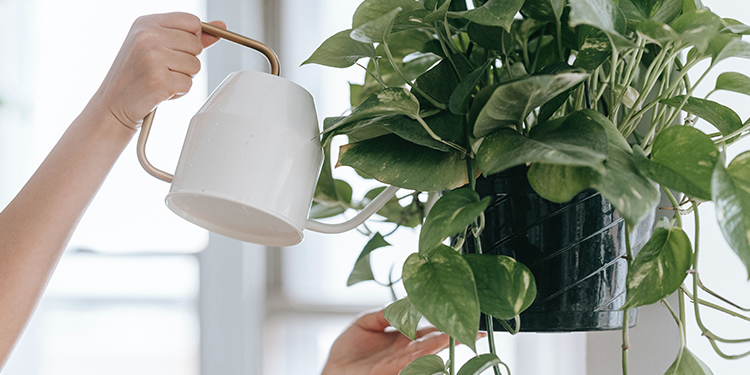
Tropical Plants
Tropical plants are easy to find and you will notice this as soon as you go shopping for a new houseplant. The great majority of gardening shops offer a similar variety of tropical houseplants and for a very good reason. Tropical plants are extremely advantageous in that they are easy to grow and most of them have similar needs.
In general, tropical plants can survive without too much natural light. Why? Because in their natural habitat, tropical plants spend their lives under the shade of large trees. This is great if you want to fill your house with beautiful greenery because you won’t have to cram all of them on your windowsills.
Another thing that makes tropical plants great indoor companions is that they don’t need a lot of attention, so you won’t have to put in too much effort to keep them alive.
Planning on decorating your space with tropical plants? You can start with these popular types: bromeliads, pothos, spider plants, palm plants, ZZ plants, alocasia, or Chinese evergreen.
Orchids
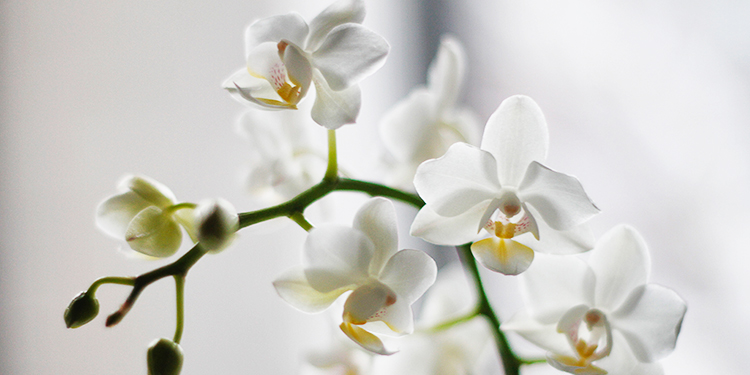
While it is easier to care for tropical plants that have attractive foliage, caring for orchids has its perks. For starters, their blooms are spectacular and keeping them in good shape is very satisfying. If you are looking for plants that are special and mesmerizing, orchids are a great option.
Florists and interior designers love these plants because they can complement any interior design with their delicate stalks and bright colours. Their flowers can last for a long time if the plants are well-taken care of, so why not try your hand at caring for an orchid?
Statement Plants
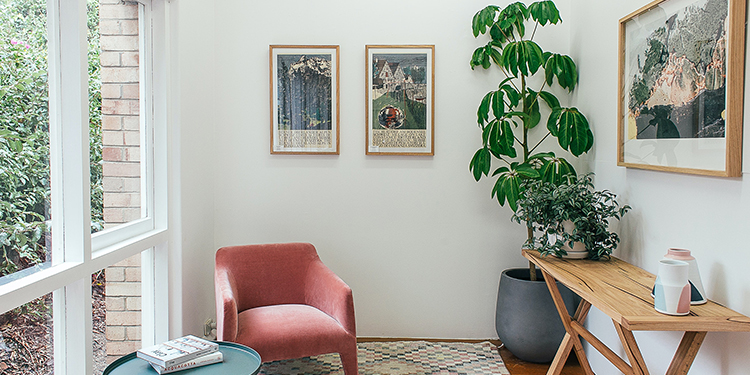
When people say ‘statement plants’ they usually refer to large plants that become the focal point of a room. Statement plants are usually placed on the floor, but they can also be placed on a table or on a mantle. In small spaces, statement plants can have more modest sizes.
If you have a room that doesn’t have a lot going on for it, you can spruce it up with a statement plant. A well-chosen floor plant can also improve the aspect of a corner that’s a bit dull and can make your interior design look complete and alive.
When it comes to statement plants, the most important thing is to choose them wisely. If you want to place them in a corner that doesn’t get a lot of natural light, make sure you choose plants that thrive in the shade, such as Devil’s Ivy, Sago Palm, or Dieffenbachia.
Succulents and Cacti
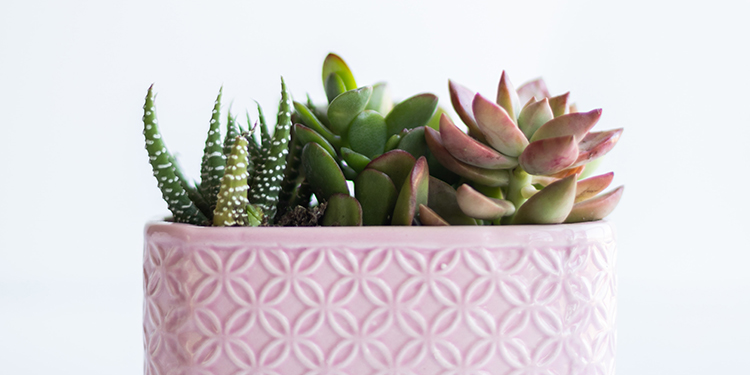
Decorating your indoor space with succulents and cacti has a lot of advantages. These plants are extremely popular at the moment as people have realized that they are really easy to grow and they can be used to decorate small spaces.
So, if you are not the most experienced gardener, live in a small apartment, and want to try your hand at indoor gardening, succulents and cacti are a perfect option. The only things that you need to remember are to avoid overwatering and to give your succulents and cacti as much natural light as you can, while also protecting them from the scorching sun.
Collections
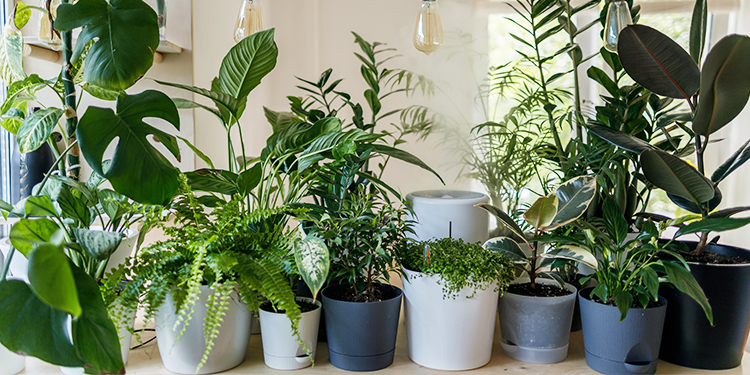
Plant collections are a fun way to try your hand at indoor gardening. You can assemble your collection by aspect, growth requirements, or flowering habits, or just based on your taste and preferences.
You can start with a low-maintenance cacti collection, succulents collection, or tropical plants collection. If your home lacks natural light, we recommend collecting ferns or ZZ plants.
Plant Shelves

Plant shelves, sometimes referred to as plant shelfies, are the new obsession when it comes to indoor gardening. If you go on Pinterest, you’ll find hundreds of beautiful photos of plant shelves. We love this interior design trend because it is functional, boosts creativity, and makes for a great hobby.
Instead of having a shelf that’s filled with dust-gathering objects, why not invest some time and effort into an all-natural shelf decorated with your favourite plants. We have to admit that we love to look at pictures of plant shelves just to see the amazing variety of planters and tiny succulents that people choose. Hanging plants and plants with rich foliage look amazing on shelves as well. If you like to be on the practical side, you can grow herbs and other edible plants instead.
Plant Walls
Plant walls are grandiose and leave a long-lasting impression. If you have an empty wall and you are looking for ideas to make it more aesthetically pleasing, you can transform it into a plant wall. It is important to choose plants that will thrive on the wall, so make sure you consider their growth requirements.
Room Dividers
Room dividers are not much different from plant walls, but they are a bit more permissive. If your room divider has many open shelves, all you have to do is to fill it with as many potted plants as you can. Plant room dividers are great because they offer a nice view on both sides and more privacy.
Macrame plant hangers
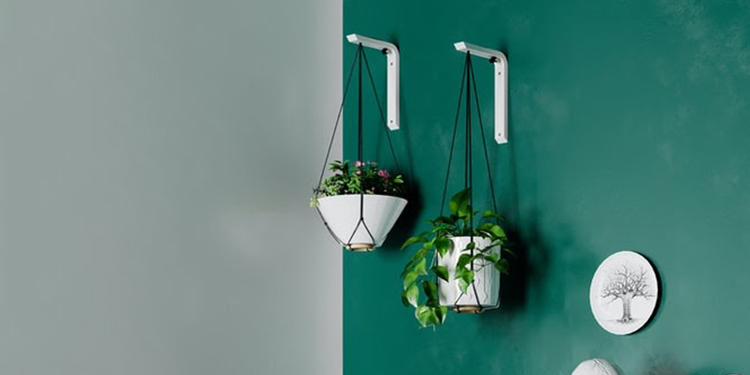
Over the last few years, we’ve noticed that macrame plant hangers have seen a huge increase in popularity. When you combine the art of knotting rope and a love for plants, you get this boho trend that everyone is crazy about. We have to admit that we love to look at photos posted by boho-chic and jungalow indoor gardening enthusiasts and we’re sure that you’ll fall in love with this trend as well.
The best plants for macrame plant hangers are air plants, ferns, English ivy, and anything that droops and that has long attractive foliage. We don’t recommend growing orchids in macrame pots, or other plants that have unique growth requirements.
Terrariums
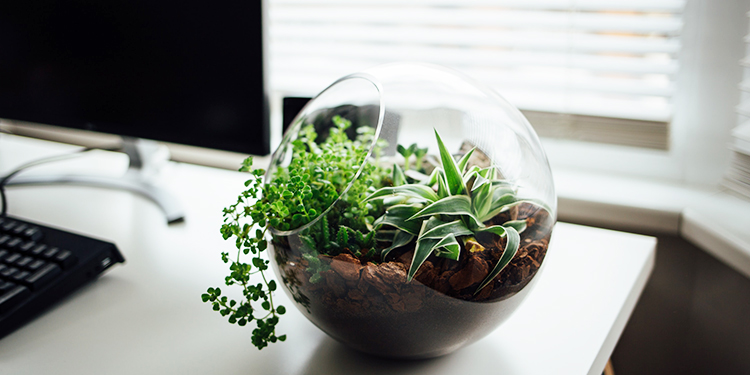
If you’re looking to combine different elements such as the living component of plants with decorative rocks, and other materials, you can try building a terrarium. There are many tutorials that can teach you how to build your own terrarium and you can choose the one that suits your space and your preferences.
If you want to build your first DIY terrarium, you’re going to need a few key elements including a nice open or closed glass container (open terrariums are recommended if you don’t have a lot of experience), a few terrarium plants such as tillandsia, tiny succulents, button ferns, cacti, and other slow-growing plants, and other decorative materials.
Air Plants

Air plants are very interesting because they survive without roots and they don’t need soil with nutrients as other plants do. They are quite different, so you’ll have to adapt to their unique growth requirements. An important thing to remember about air plants is the fact that they get their nutrients from water and fertilizer, and not from their soil. Some air plants benefit from daily mists, while others need to be submerged in water on a weekly basis.
These plants are truly fascinating, which is why a lot of gardening enthusiasts love them. They look great and with a little creativity, they can be arranged and displayed in many awesome ways. Make sure you don’t place your air plants in soil or on moss. Instead, you can place them on lava rocks or glass pebbles.
Kokedama
Japan is the birthplace of many amazing plant trends, and kokedama is one of them. It translated to Moss Ball and we think it is a living piece of art. Creating a kokedama is quite difficult, but caring for it is a piece of cake. All you need to do to keep your kokedama fresh is to submerge it in water weekly, or based on the needs of the plants growing in your kokedama. You can think of this moss ball as a sort of living container for other plants, or as a hanging garden.
Fundamentals of Caring for Indoor Plants

There are many amazing plants that you can grow indoors but it is very important to choose those that will thrive in your home. As mentioned above, it is critical to consider the needs of the plants and whether or not those needs will be met with ease in your indoor space. Read on to learn what makes plants grow and what they need in order to thrive.
Light
All plants need light so it is important that we mention right off the bat that this is one of the most important growth requirements that you need to consider. While it is true that some plants can survive with less light than others and that there are some that are quite sensitive to direct sunlight, all plants need light. You can think of the plants’ leaves as big solar panels that capture as much natural light as the plants need. So, before you pick a plant, analyze the light in your home.
You will find a lot of plants labelled as “low-light tolerant”, but even those plants will still need some light to survive. Sansevierias, Calatheas, Bromeliads, Dracaenas are a few examples of plants that need less natural light but keep in mind that these plants will not thrive in low-light conditions, they will simply survive.
If you want to grow plants indoors but your space lacks natural light, you’ll be happy to learn that there are some plants that can thrive with artificial light. LED lights, incandescent bulbs, and fluorescent lights can be enough to keep plants like Philodendrons, African Violets, and Chinese evergreens alive. So don’t lose hope, you can bring nature indoors even if your space lacks natural light, but make sure you pick the right plants.
Water
Another rule of thumb when it comes to gardening, be it outdoors or indoors, is that all plants need water. Water is a vital component for all types of plants even cacti. But have you ever wondered why plants need water? It’s quite simple. Water is absorbed through the roots and it travels through the stems, reaching the leaves. During this process, the plants absorb nutrients from the soil. So water is, in fact, a means of transportation for nutrients. The process ends with transpiration when the plant evaporates through the pores of the plants.
So, it is important to remember that if it’s green and alive, it needs water and light. But when it comes to watering plants, there are a few important rules of thumb that need to be considered:
- The watering schedule of a plant changes based on seasonality, dormancy, light conditions, and humidity.
- In dry environments, some plants will require misting or more frequent watering.
- Succulents and cacti need more water during the summer months, and during the winter months, some of them can survive without any water.
- If you tend to forget to water your plants, choose plants that don’t mind dry soil such as ZZ plants, snake plants, pothos, air plants, zebra cacti, etc.
- Some plants hate to get their leaves wet, so make sure you only water their soil. These plants shouldn’t be misted and should be kept in dry environments.
- Water your plants evenly and with consistency.
- In general, plants prefer to be watered rarely but thoroughly rather than daily and sparingly.
- The best time to water the plants is in the morning, this will give your plants plenty of time to absorb all the nutrients they need during the day.
Airflow

Although it is an important aspect, airflow is rarely discussed in relation to indoor gardening. As you may have noticed, some indoor spaces have better airflow than others. If your home gets chilly and you feel the cold air moving around even when the windows are closed, then you have plenty of airflow in your home. If, on the other hand, you live in a small apartment and you sometimes feel like there is no air, you might live in an air-tight space.
When it comes to choosing your houseplants, you should be aware of the fact that most of them need airflow to get rid of the excess moisture, especially those who love the occasional misting. Air plants such as Tillandsia who require frequent soaking and misting will eventually rot if the water doesn’t evaporate from their leaves.
On the other hand, during the cold winter months, plants might not tolerate cold drafts so you should consider moving them around until you find a sheltered spot for them. All in all, each plant has unique needs when it comes to airflow, so make sure you take these needs into consideration.
Humidity
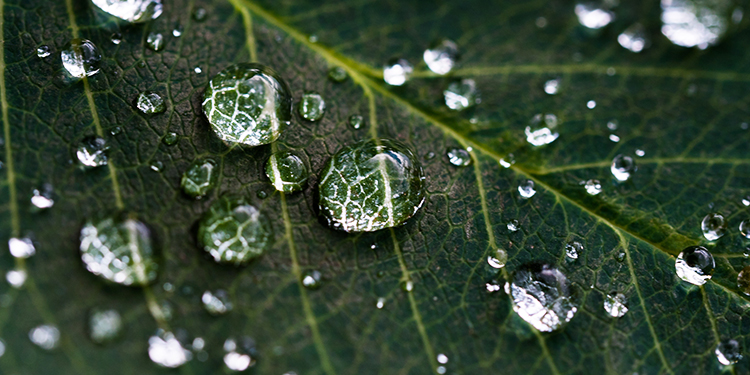
Another component of plant health that is often overlooked is humidity. The amount of water vapour that’s present in the air inside your home can have a huge impact on the health of your indoor plants. If the air is too dry, the soil will dry out quicker, so you might have to water your plants more frequently.
Tropical plants, which thrive in humid environments, might suffer in spaces with low humidity, so make sure you take some time to mist them. Plants that natively grow in the desert might not be comfortable in very humid environments, as they are more susceptible to root rot.
It is important to remember that during the winter months when you heat your home, the humidity will fall to 20-30%. This lowered level of humidity will affect your plants and it will affect your health as well, as you will become more susceptible to a respiratory problem. The ideal humidity for indoor spaces is between 30 and 60%. If it gets more humid than this, you run the risk of triggering a mould infestation. But luckily, to achieve the optimal levels of humidity, you can always rely on a humidifier or a dehumidifier, depending on your current conditions.
Temperature
We’ll say it again, different plants have different needs, and things are no different when it comes to temperature. In most cases, plant health depends on warmth, but some plants prefer cool environments. For instance, Schlumbergeras need to be kept in a cool and dark environment in order to trigger flowering, while other plants flower during the hot summer months. For most houseplants, the ideal temperatures are between 15°C – 24°C (60°F – 75°F), but it is always better to check the temperature requirements of each plant before you bring it home.
Soil
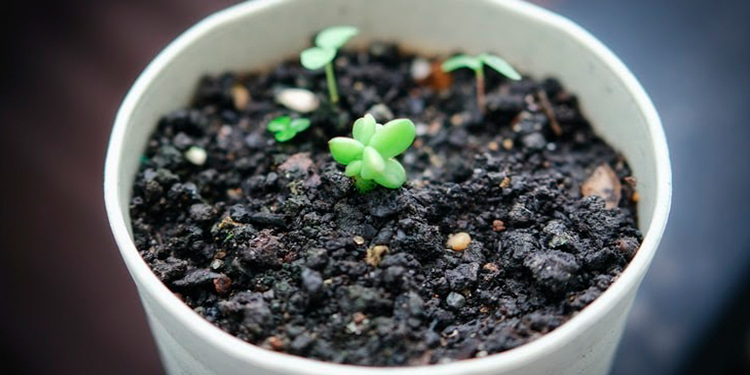
It shouldn’t come as a surprise that plants prefer different types of soil. It all depends on where they grow natively. For instance, plants that grow in dry and warm environments such as succulents and cacti will always require a well-draining soil mix. Plants that grow in temperate environments will require more fertile soil, and there are some plants that don’t need any soil at all, these plants are called air plants.
In general, the soil should provide all the nutrients that the plant needs, should provide support so that the plant can be in an upright position, and it should protect the plant’s roots. You can find a lot of soil-making guides and ideas online, but if you want to skip this step, you can simply buy the right type of soil from a local plant shop. The good thing about bagged soil is that it is sterilized which makes it easier to prevent pest infestations.
Containers
Choosing the right containers is quite fun, as long as you keep a few things in mind. Most importantly house plants need to be planted in containers that have drainage holes. So, when you buy a new plant, you can keep it in the original plastic pot, and place the whole thing into a more attractive container. Or, you can move it to a new container, but make sure you use the right soil and that you choose a container that has an appropriate size and drainage holes.
When it comes to materials, a lot of gardeners prefer terracotta platers because they are more breathable than plastic. Another advantage of terracotta pots is the fact that you can notice the chalky build-up that consists of calcium deposits and salt. When this build-up becomes visible, it means that your plant needs a distilled water flushing.
If, however, you don’t get terracotta pots, it’s important to understand that each material reacts differently and it can affect the health of your plant in a certain way. To prevent that from happening, keep a close eye on your plants, and adjust the temperature, the humidity, and the watering schedule accordingly.
Food
As mentioned above, soil provides plenty of nutrients, but in some cases, especially in containers, that is not enough. Plants get more nutrients outdoors than they do indoors, so, if you plan on growing plants indoors or if you are already doing it, don’t forget to refresh their soil periodically. How? With fertilizer. But make sure you use the right amount because too much or too little can cause serious damage.
As a general rule, avoid fertilizing your plants during their dormancy period and make sure you do some research about your plant’s needs before you fertilize its soil. Keep in mind that most plants will require you to dilute the fertilizer, which is why it is very important to do it correctly.
Pruning & Pinching
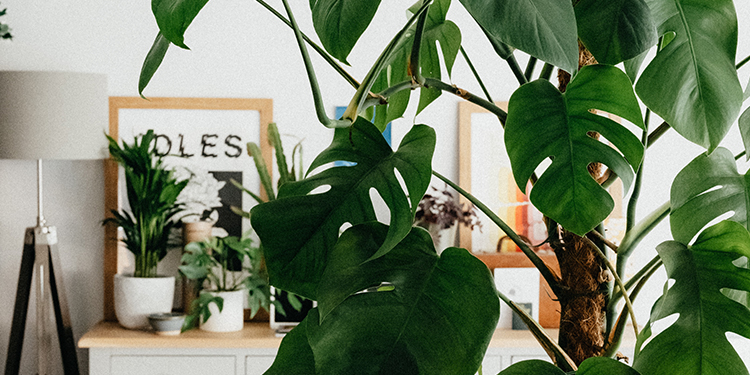
When left to their own devices, some plants can become leggy, unsymmetrical, or simply grow too fast. Pruning and pinching is usually a matter of preference and not a life or death situation, but in some cases, trimming your plants back will be beneficial. And the best part is that you can use the cutting to propagate your plants.
If your plants grow unevenly, try to rotate them periodically as they might get more sunlight on a certain side. When it comes to pruning, only use clean and sharp tools to prevent infections.
Pests
Most houseplants are quite resistant to pests and most indoor gardeners can enjoy their green companions without having to deal with these annoying critters. But it is quite important to know how to spot some of the most common pests and diseases so that you can solve the issue sooner rather than later.
Here are a few important houseplant pests that gardeners deal with most frequently:
Scale
If the leaves of your plants are sticky and you notice some brown ovate bumps, you are probably dealing with scale insects. Brown soft scale is the most common type of scale and it is a bit of a challenge to get rid of it. It is important to isolate the affected plant and if severely affected, discard it, or if you want to try and save it, follow the instructions from this article.
Mealybugs
These insects are attracted to edible plants, such as potatoes, and they spread more rapidly than scale because they can move. If your plants are close to each other, the mealybug infestation can quickly spread to all of them. The most effective way to get rid of mealybugs is by dabbing alcohol onto them.
Aphids
Aphids are annoying little green insects that spread quickly and love herbs and edible plants, but are not fans of tropical plants. They produce a sticky honeydew that can trigger other issues such as mould or ants. The most effective way to get rid of aphids is by spraying them off the plant with a hose. If you notice any aphids left, crush them with your fingers. Repeat the method until your plant is aphid-free.
Whiteflies
You can easily mistake whiteflies with tiny moths or flies, but if you notice them around your plants, chances are you’re dealing with a pest. Whiteflies are attracted to yellow, so you can get rid of them using yellow sticky traps, but spraying them off with a hose outdoors will work as well.
Red Spider Mites
These arthropods are extremely difficult to get rid of, which is why they might be the most feared common houseplant pest. Spotting them is quite difficult, but keep an eye out for webbing and brown dots. You can prevent red spider mites by avoiding dry conditions and keeping your plants in a humid environment.
Fungus Gnats
Being quite similar to fruit flies, fungus gnats can be quite annoying. They love fresh damp compost, which is what their larvae will feed on. Fungus gnats aren’t particularly attracted to your plants, but if they don’t get enough nutrition from the soil, they might munch on the plants. You can get rid of fungus gnats by using Bacillus thuringiensis and yellow sticky traps.
Thrips
This is a less common problem, but they will usually appear around herb gardens. They create silver discolourations on the plant’s leaves and spread quite quickly. The most effective ways to get rid of thrips are blue sticky traps and, if you’re an experienced gardener, by releasing some natural predators such as Naoseiulus cucumeris mites and Orius insidiosus flower bugs.
The Best Indoor Plants
There are many beautiful and low-maintenance indoor plants, so making the following list was a bit of a challenge. After all, the best plants are those that thrive in your home and that you like best. Here are some of our favourites:
Macho Fern
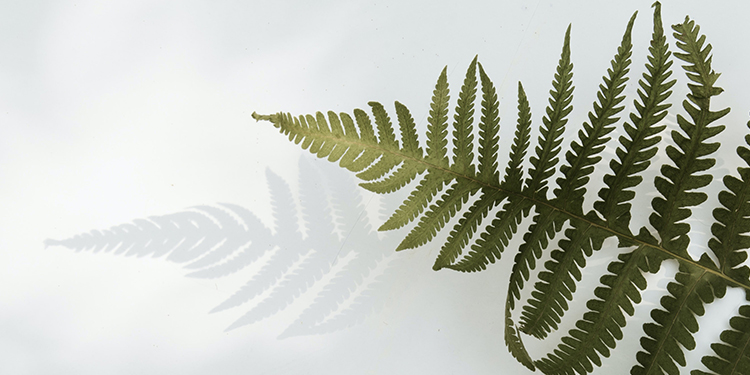
Also known as the Giant Sword Fern, this tropical evergreen houseplant is a great companion. Its main growth requirements consist of light shade, bright, but filtered light and plenty of moisture. The Macho fern can grow quite big, so it can be a great statement plant, especially in a room that has west or south-facing windows.
Rubber Plant
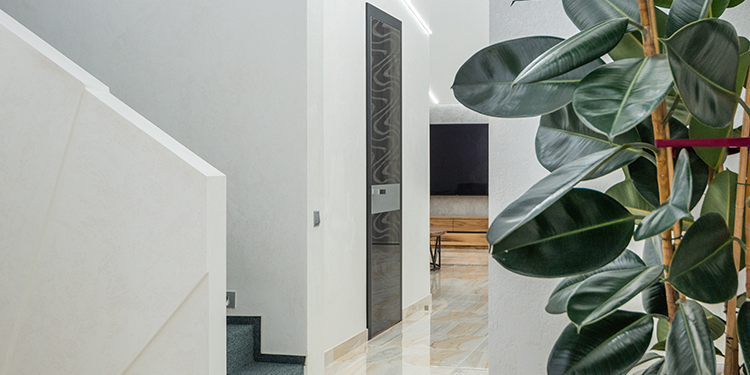
Ficus elastica, also known as Rubber plant, is a medium-sized houseplant that can become the focal point of any room. Large plants look amazing, but if you get a younger plant it will grow out to be better adapted to its surrounding environment. If you want to keep your rubber plants small, keep them in small containers, but refresh their soil once in a while.
Bird of paradise
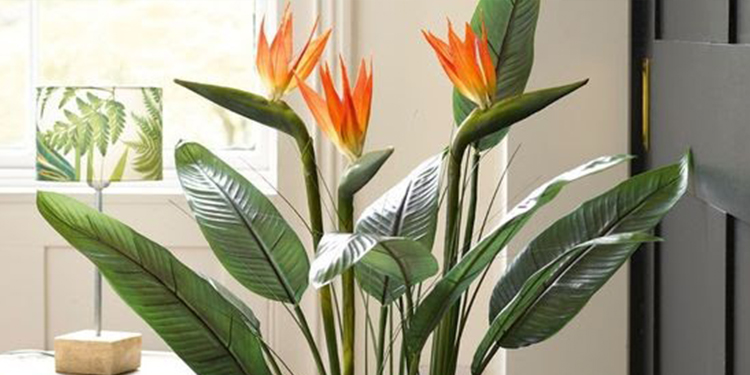
Strelitzia, also known as Bird of Paradise, is one of the most spectacular and exotic-looking house plants. It is worth mentioning that this plant has some very specific growth conditions but caring for it is extremely rewarding. So, to grow healthy and happy, Strelitzia needs rich, well-draining soil, filtered, bright natural light, and temperatures between 18-21 C (65-70 F) during the day and around 10C (50F) during the night.
African Violet
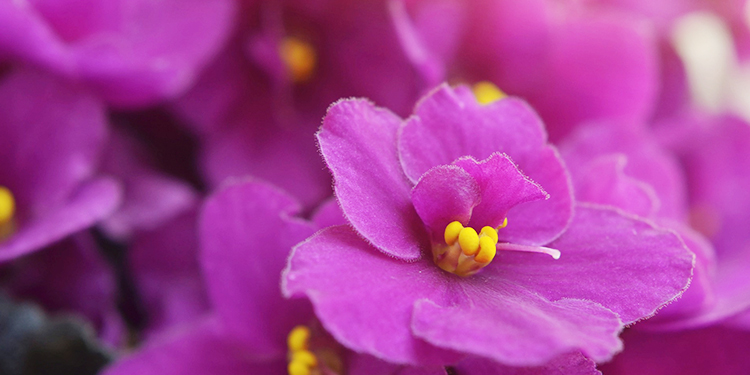
Saintpaulia plants, also known as African Violets, are a bit of a challenge for many gardeners. But once you figure out what their needs are, you’ll find that growing them is a fun and rewarding activity. So what do African violets need in order to thrive? It’s quite easy, they need a soil mix that consists of equal parts perlite, vermiculite, and peat moss. When it comes to watering, they are a bit picky, so make sure you don’t get any water on their leaves and only water them with lukewarm water that was left out for at least 48 hours. Find out more about growing and caring for these cute plants from our African Violets guide.
Tillandsia
Tillandsia belongs to the air plant category so it doesn’t need any soil. Isn’t that amazing? Air plants, including Tillandsia, can get all their nutrients from the air. Growing air plants is a fun activity and if you do a quick search on Instagram, you’ll see that these plants are trending. So what do air plants need in order to thrive? Just a sheltered, shaded spot, where they will get plenty of natural light but no direct sun, a nice soaking every one or two weeks, and regular misting. Tillandsia plants can be used in terrariums and for other decorative purposes.
Ant Plant
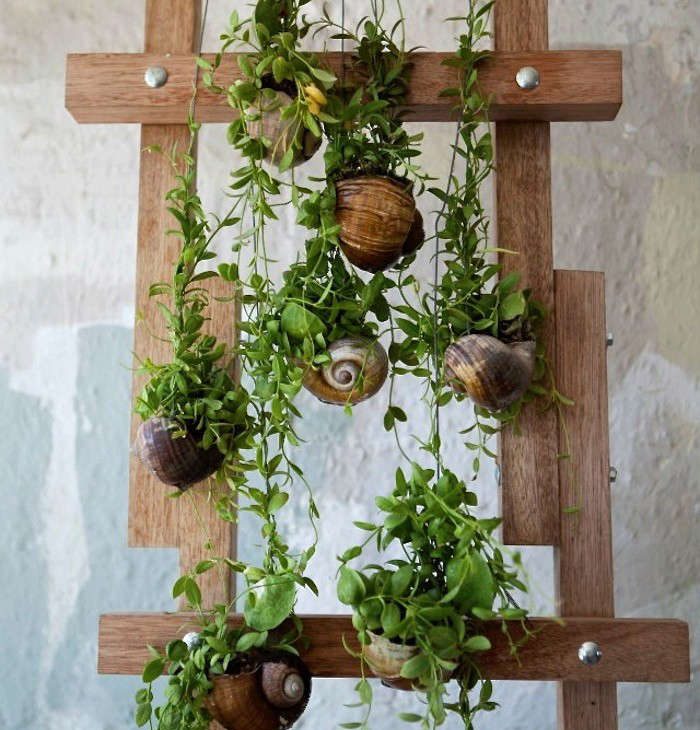
Dischidia pectinoides also know as Ant Plant is a trailing epiphyte so it doesn’t require soil. Like Tillandsia, Ant Plants can also thrive in terrariums as long as you provide them with filtered natural light, water, and air. This interesting and unique-looking plant produces tiny red, pink, or orange flowers and it can make for a perfect bathroom plant.
Aloe
Aloe plants come in many different colours, shapes, and sizes. Their foliage is attractive, and they are beloved by gardeners all around the world for their low-maintenance nature. If you are a beginner gardener and are not sure what your first plant should be, we recommend Aloe. These plants thrive when planted in well-draining soil and placed in a bright location, but protected from the scorching sun.
Aralia
There are many different types of Aralia plants to choose from including evergreen shrubs, deciduous trees, and attractive indoor plants. Ming Aralia for instance is a versatile ornamental plant that can easily be grown indoors. Aralias can reach impressive sizes, but they can also be kept small through trimming. The optimal growth conditions for Aralia plants include well-draining soil and full sun/partial shade.
Asparagus Fern
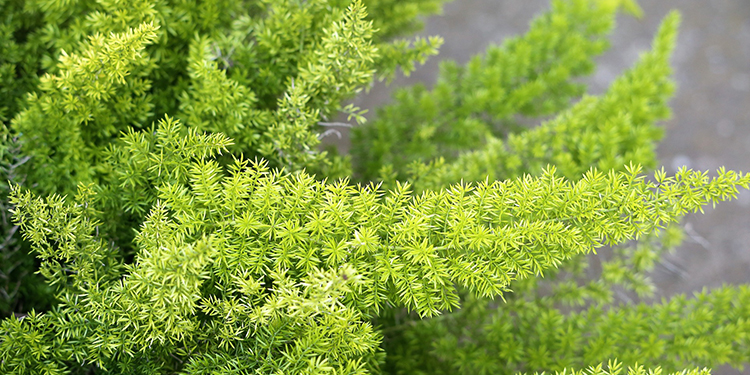
If you are looking for a low-maintenance houseplant that can be grown in a hanging basket, Asparagus Fern is a great option. Asparagus ferns have many benefits – they can complement your interior decor, they clean the air, and they are very easy to grow and care for. As long as you provide your Asparagus Fern with plenty of humidity, occasional misting, pruning and fertilizing, it will reward you with its attractive foliage.
Bromeliad (link to our guide)
These exotic-looking plants are a must-have as they produce unique-looking flowers and can be grown successfully by any gardener. Growing and caring for Bromeliads is easy, all they need is plenty of natural light, a shallow pot, and low-soil mediums such as orchid mixes or blends that contain sphagnum moss and bark. It is important to mention that you need to ensure that Bromeliads have some water in their leaf cup. Interested to learn more about Bromeliads? Read our Bromeliad care guide.
Crassula
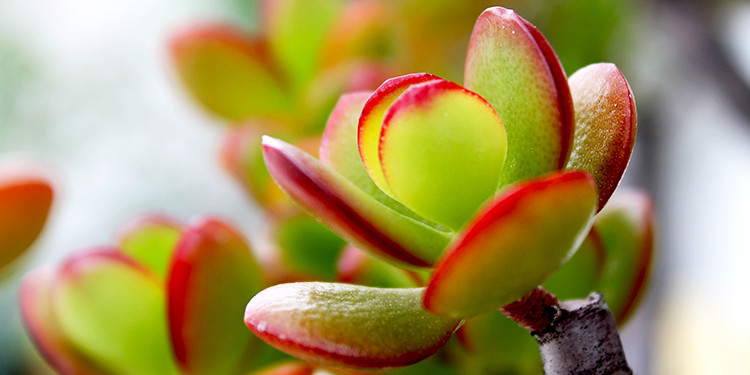
Crassula plants are cute succulents that can easily be grown by beginner gardeners. They are very popular houseplants because, like most succulents and cacti, they are low-maintenance and come in a wide range of textures, sizes, and shapes. To grow healthy and happy crassula succulents, make sure you plant them in well-draining soil and water them using the ‘soak and dry’ method that consists of waiting for the soil to dry out completely in-between waterings.
Fiddle Leaf Fig
Fiddle Leaf Figs are attractive ornamental houseplants that have become extremely popular over the past years. There are many compelling reasons to add a Fiddle Leaf Fig to your plant collection, but it’s important to remember that this houseplant is a bit finicky. To grow healthy and happy, Fiddle Leaf Figs need to have constantly damp soil that isn’t too wet or too dry, to be kept away from drafts, and to get plenty of natural, but filtered light. If you want an attractive indoor plant that will grow quite big and that will easily become the focal point of the room, then why not try your luck with a Fiddle Leaf Fig.
Monstera
This evergreen tropical houseplant needs no introduction. If you’re into gardening, you are surely familiar with Monstera. Whether you’ve admired it on Instagram or you’re already growing it in your home, there surely is a place in your heart for this spectacular plant. Monstera is generally easy to care for in indoor spaces, as long as it gets plenty of indirect natural light, period watering, and a well-draining potting mix.
Mother in Law’s Tongue
Sansevieria trifasciata, Commonly known as Snake Plant or Mother in Law’s Tongue, this houseplant is quite popular due to its hardy nature. Snake plants can come in different colours, but their leaves are usually green, with yellow edges. The best thing about Snake Plants is that you can grow them in any corner of your home because they don’t need a lot of light to thrive. However, in low-light conditions, they will grow much slower, which can be a good thing if you like small houseplants.
Palm Trees
Palm trees make great indoor companions, especially if you can give them plenty of space to grow. There are over 2,600 different species of palm trees and most of them have a tropical aspect with large green leaves. It is important to mention that different palm trees can have different growth requirements. In general, however, they will need natural light and generous waterings. Some varieties will also need fertilizing.
Philodendron

Being able to adapt to a variety of growth conditions, Philodendrons make amazing houseplants. Their large, dark green leaves allow them to survive low-lighting conditions, so you can place them in any corner of your home. A common problem that gardeners have with their Philodendron plants is yellowing leaves, which usually happens due to overwatering. As long as you avoid overwatering, your philodendron will thrive.
Western Sword Fern
Polystichum munitum, commonly known as Western Sword Fern, is a classic fern that you are very likely to encounter while hiking on a shady trail in the woods. If you’re a fan of green, low-maintenance plants, you’ll be happy to learn that the Western Sword Fern makes a great indoor companion. As long as you provide it with humus-rich, fertile soil with good drainage properties and generous watering, your Western Sword Fern will reward you with its lush green foliage.
ZZ Plant

Zamioculcas zamiifolia, commonly known as ZZ plants are trending on Instagram and shouldn’t be missing from your plant collection. Why? Because ZZ plants can survive the occasional neglect and they thrive in low-lighting conditions while still maintaining their beautiful green foliage. These plants sound too good to be true, but luckily for us, they are real. Also, they are great air purifiers but can be quite toxic if ingested, so make sure your kids or your pets can’t reach your ZZ plants.
Spider Plant
Our list wouldn’t be complete without Chlorophytum comosum, A.K.A. Spider Plant. This attractive and tropical-looking houseplant is very adaptable and easy to grow. Other than occasional browning of the tips, this plant rarely suffers from other issues. So, if you’re looking for a plant that won’t give you a hard time and that will complement your interior decor with its dense foliage, look no further as Spider Plant is the perfect candidate.
FAQ:
How long do indoor plants live?
Most indoor houseplants live between 2 – 5 years, but their longevity can vary. For instance, some houseplants have been known to live for centuries, like this Eastern Cape giant cycad that was planted in 1775 and is still alive today. Monocarpic houseplants, such as Bromeliads, will die off after flowering, but they will produce plenty of pups before that.
What are the easiest indoor plants to take care of?
The easiest indoor plants to take care of are succulents and cacti which require very little care and tropical plants that can adapt to a wide range of conditions. The easiest succulents to grow and care for are Aloes and Sansevierias. When it comes to tropical plants, we recommend Philodendrons, Scheffleras, and Dracaenas.
What indoor plants are safe for cats?
There are many indoor plants that are non-toxic and, thus, perfectly safe to grow around your pets. Here are some examples: Spider Plant, Rattlesnake Plant, Parlor Palm, African Violets, Haworthias, True Ferns, Gloxinias, Peperomia, Orchids, Bromeliads, etc. If you want to make sure that you only buy houseplants that are non-toxic, we recommend doing some extra research for each specimen.
Why do the leaves of some indoor plants turn yellow?
Your plant’s leaves can turn yellow for many different reasons but the main culprits are overwatering and underwatering. Leaves will turn yellow before they drop, so any discomfort can result in yellow leaves. To avoid yellow leaves, make sure you learn about your plants’ needs and growth requirements and adjust your watering schedule based on the season, humidity levels, temperature, and other environmental conditions.
Which indoor plants like direct sunlight?
Some indoor plants thrive on sunny windowsills, while others might suffer sunburns quite rapidly. If you have a really sunny spot in your home, it is important to pick a plant that will thrive in direct sunlight. Here are some examples: Aloe, Crassula, Sansevieria, Senecio, Croton, many types of cacti, Kalanchoe, Strelitzia, Yucca, Sago Palm, Dracaena reflexa, Hibiscus, etc.
Which indoor plants like shade?
There are many indoor plants that will thrive in low-light conditions. If you want to fill your home with attractive plants but you don’t get a lot of natural light, pick one of the following shade-loving plants: Philodendron, Fern, Spider Plant, Calathea, Monstera, Areca Palm, Kentia Palm, Parlor Palm, Cast Iron Plant, Hoya, Silver Inch Plant, Peace Lily.
Resources
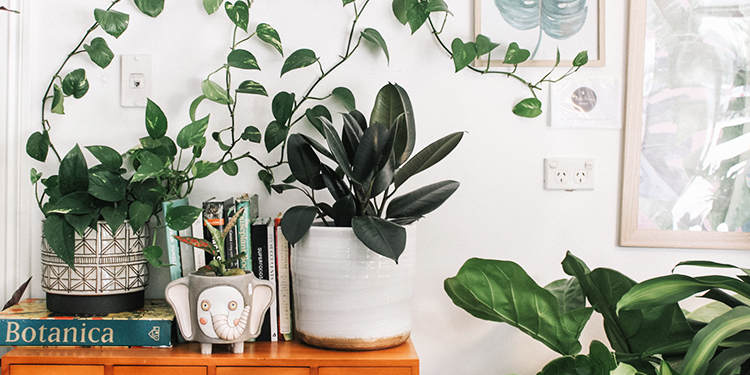
Where Can You Buy Indoor Plants in AU?
Where Can You Buy Indoor Plants in the UK?
Where Can You Buy Indoor Plants in the USA?
Books
Want to learn even more about growing tropical plants, succulents and cacti, bonsai, or about creating a terrarium? Here are some of the most amazing books about indoor gardening and other related topics:
Houseplants
- ‘How Not to Kill Your Houseplant: Survival Tips for the Horticulturally Challenged’ by Veronica Peerless
- ‘Wild at Home: How to style and care for beautiful plants’ by Hilton Carter
- ‘New Plant Parent: Develop Your Green Thumb and Care for Your House-Plant Family’ by Darryl Cheng
- ‘Little Book of House Plants and Other Greenery’ by Emma Sibley
- ‘Field Guide to Urban Gardening’ by Kevin Espiritu
- ‘How to Houseplant’ by Heather Rodino
- ‘The Orchid Whisperer: Expert Secrets for Growing Beautiful Orchids’ by Bruce Rogers
Succulents and Cacti
Bonsai
Terrariums
YouTube Channels
Watching YouTube videos about gardening is a very relaxing activity. If, like us, you enjoy watching videos before bed or while doing chores, check out the following indoor gardening YouTube channels:
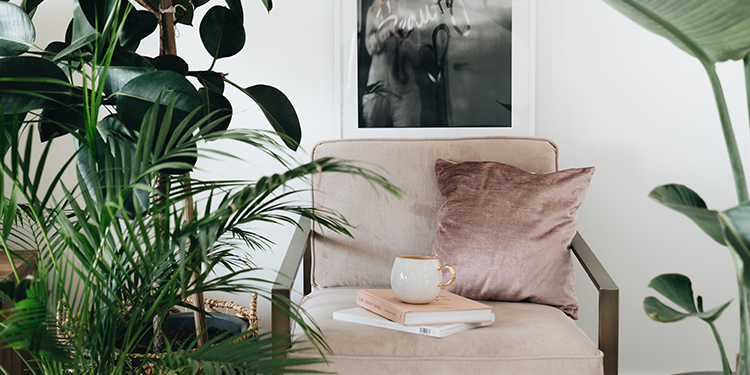
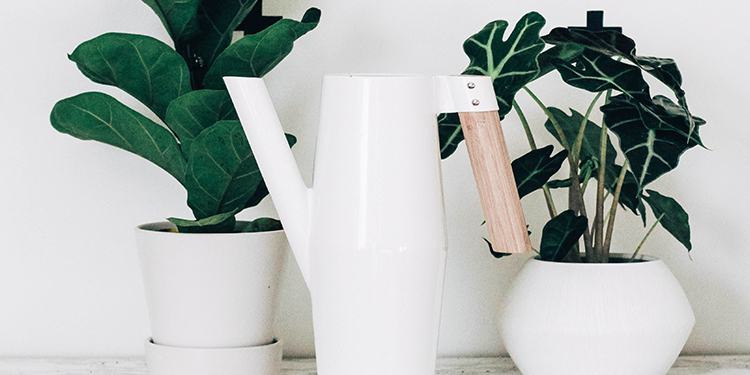
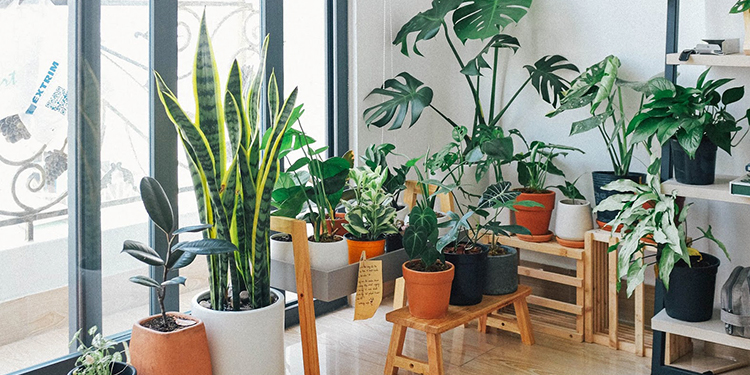
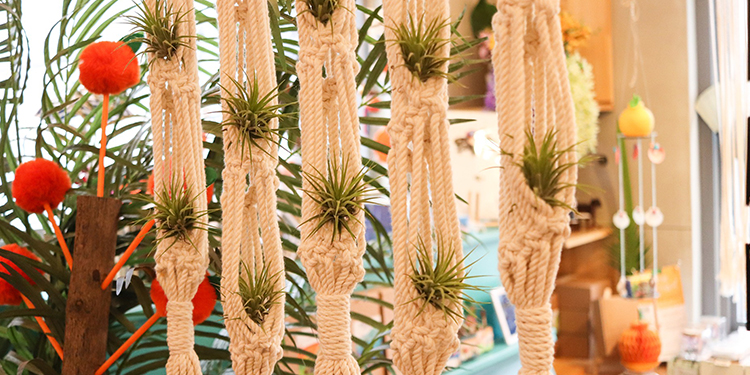

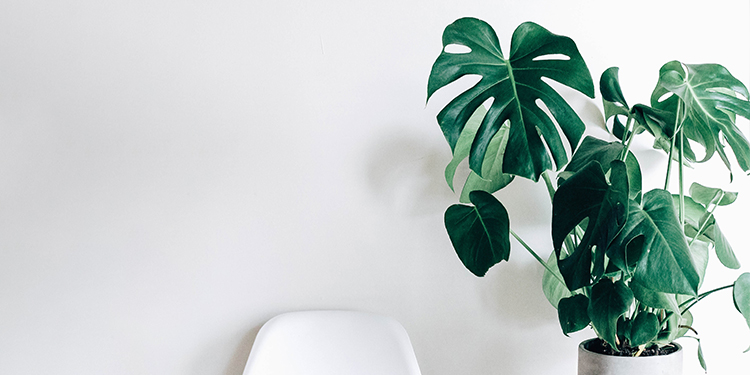

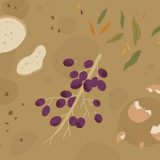
Comments are closed.